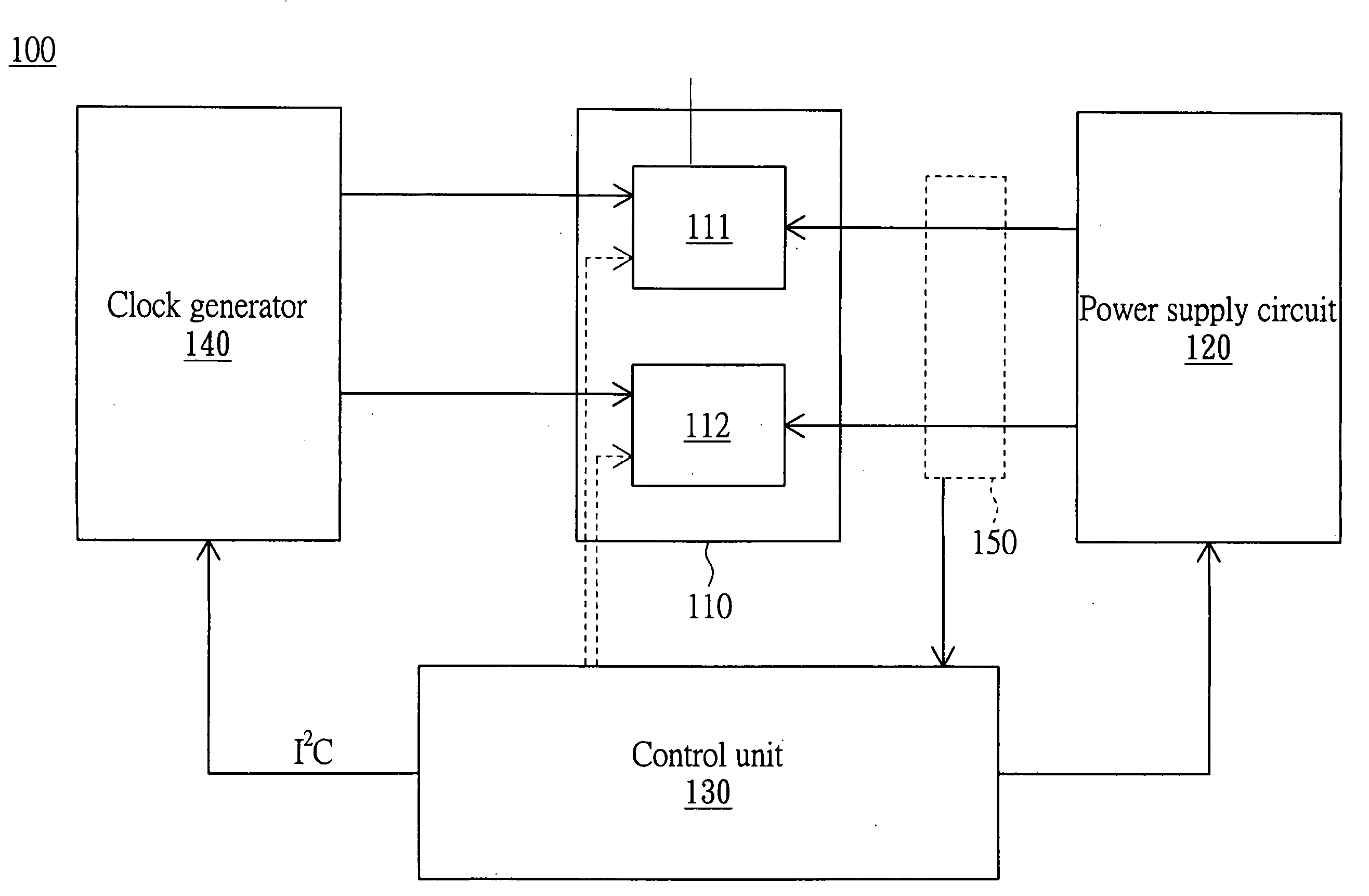Adjusting performance method for multi-core processor
- Summary
- Abstract
- Description
- Claims
- Application Information
AI Technical Summary
Benefits of technology
Problems solved by technology
Method used
Image
Examples
first embodiment
[0029]FIG. 2 is a flowchart showing an adjusting performance method for a multi-core processor of the invention. In the step S205, the multi-threadedness of the multi-core processor 110 and the load of the processing cores 111 and 112 can be detected by a hardware monitoring means or by a software monitoring means to obtain a detecting result.
[0030]In the step S210, the control unit 130 determines whether the load (or the operation bottleneck) is concentrated on a single processing core according to the detecting result obtained in the step S205. That is, the control unit 130 determines whether the difference value between the load of the first processing core 111 and the load of the second processing core 112 is greater than a default value.
[0031]In the embodiment, the operation bottleneck and the load concentration mean the same state. That is, as for one processing core (such as the processing core 111) of the processing cores 111 and 112, no matter the processing core (the proce...
second embodiment
[0043]The difference between the FIG. 2 and FIG. 3 is that the second embodiment uses different means to adaptively adjust the processing core. As shown in FIG. 3, if it is determined that the load is concentrated on a single processing core in the step S310, the step S315 is executed to determine the range of the multi-threadedness of the multi-core processor 110. For example, when it is determined that the multi-threadedness is higher than a first default value (such as 30%), the step S320 is executed; when it is determined that the multi-threadedness is lower than a second default value (such as 10%), the step S330 is executed; when it is determined that the multi-threadedness is between the first and the second default value, the present operating setting is maintained, and the step of returning to the step S305 is executed.
[0044]When the step S305 is executed, the multi-core processor 110 may be in the first operating setting (come from the step S303) or in other operating sett...
PUM
 Login to View More
Login to View More Abstract
Description
Claims
Application Information
 Login to View More
Login to View More - R&D
- Intellectual Property
- Life Sciences
- Materials
- Tech Scout
- Unparalleled Data Quality
- Higher Quality Content
- 60% Fewer Hallucinations
Browse by: Latest US Patents, China's latest patents, Technical Efficacy Thesaurus, Application Domain, Technology Topic, Popular Technical Reports.
© 2025 PatSnap. All rights reserved.Legal|Privacy policy|Modern Slavery Act Transparency Statement|Sitemap|About US| Contact US: help@patsnap.com



